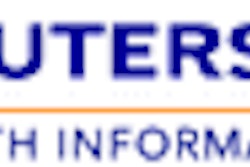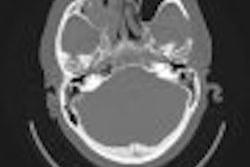AuntMinnie.com is pleased to present excerpts from Radiology: The Oral Boards Primer by Dr. Amit Mehta and Dr. Douglas P. Beall.
Radiology: The Oral Boards Primer by Amit Mehta and Douglas P. Beall
Humana Press, Totowa, NJ, 2006, $85
One of the most difficult and stressful times in the career of any diagnostic radiologist is preparing for the oral board exam, given by the American Board of Radiology (ABR).
Oral boards often engender more angst than the written boards because the potential questioning could include any possible question, or combination of questions, and because the exam requires physical participation.
Radiology: The Oral Boards Primer is designed to provide information that is typical of that found on the oral board exam for diagnostic radiology. Cases are provided to illustrate typical pathology, offering a visual source for the construction of a differential diagnosis. Once the differential is mentally rendered, the mnemonics may be used as a memory aid and to augment any missing components of the differential that would be considered important.
The chapters are organized to mimic the oral board exam format as closely as possible. The cases should be examined, interpreted, and completed in a very rapid fashion, allowing for many cases to be reviewed in a single sitting. The vast majority of the cases contain prototypical representations of pathology, allowing this text to be used as a memory aid and as a case reference source for many years after taking and passing the oral board exam.
The book can be used both during residency and at the time of review for the oral board exam. Radiology: The Oral Boards Primer will assist greatly in preparing for this exam and will contribute to the assuredness and confidence that comes from being adequately prepared. As always, a text can only improve through evaluation and evolution, and we welcome your comments.
An approach to the oral boards
The oral boards attempt to cover a large amount of material in a short period of time. It is to your advantage to cover as much material as you can so that if one case does not go well, you have a big denominator to limit the significance of that particular case. As such, it is important to have an organized approach to each case. This not only shows the examiner that you are prepared, but also allows for an intelligent discussion.
The five D's
For each case use this approach:
- Data
- Detect
- Describe
- Differential
- Diagnose
1. Data
This is a quick description of the study and any pertinent data the examiner gives you: "This is a contrast-enhanced computed tomography scan of the chest in a 42-year-old African-American female with a one-year history of shortness of breath."
2. Detect
After a quick review of the image, show the examiner you have found the pertinent abnormality: "The abnormality is throughout both lungs radiating from the hilar regions along the bronchovascular bundles."
3. Describe
Take a brief moment to describe the abnormality to show the examiner you are focusing on the correct finding. If you have incorrectly detected or described the abnormality, the examiner will redirect you to the correct path: "There is soft-tissue opacity that spreads along the bronchovascular bundles from both hila. There is associated lymphadenopathy in both hilar regions and the mediastinum."
4. Differential
Use the mnemonics in this text to give a quick differential diagnosis: "My top four considerations for this constellation of findings would include the following:
- Sarcoidosis
- Histoplasmosis or TB
- Amyloidosis
- Metastasis
5. Diagnose
Of the differential diagnoses you have provided, give the examiner your top choice and a reason: "Of these differential diagnoses, my top choice is sarcoidosis. The combination of the patient's demographic data and the finding of spread along the bronchovascular bundles associated with lymphadenopathy best support this diagnosis."
To download sample chapter galley, click on a link below:



To download these chapters, you'll need the free Acrobat Reader software to view the document once you have saved it to your computer.
By Drs. Amit Mehta and Douglas P. Beall
AuntMinnie.com contributing writers
May 9, 2006
Dr. Amit Mehta is a radiologist in practice with the South Texas Radiology Group in San Antonio. Dr. Douglas P. Beall is chief of radiology services at Clinical Radiology of Oklahoma and associate professor of orthopedic surgery at Oklahoma University Medical Center in Oklahoma City.
The opinions and assertions expressed in this article are those of the authors, and do not reflect the views of AuntMinnie.com.
Related Reading
Oncologic PET/CT: A primer for radiologists, October 14, 2005
On getting a job in radiology: a primer for residents and fellows, October 18, 2004
Preparing for the ABR oral exam: a resident's guide, February 19, 2004
Top Teaching Files, February 12, 2004
Best-case scenario: The most effective teaching files in radiology, January 8, 2004
Copyright © 2006 AuntMinnie.com



















